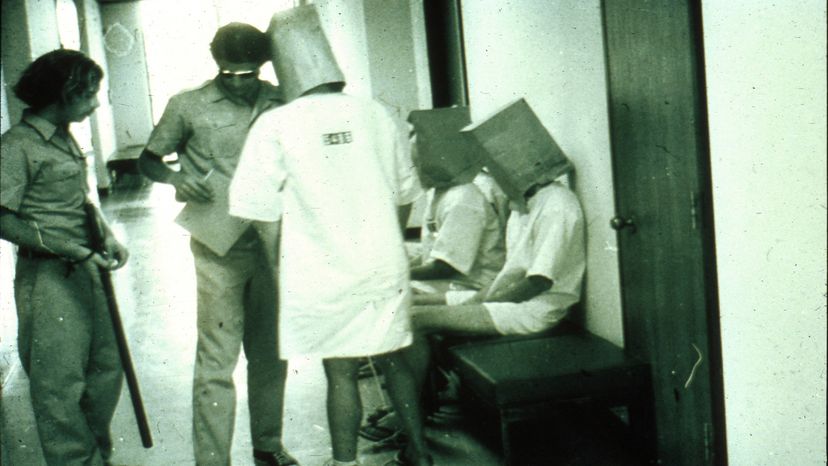A Deeper Look at the Stanford Prison Experiment

Zimbardo has written extensively about the experiment, filling in major details about what happened. There were nine prisoners and nine active guards. The remaining three participants on each side were on standby in case they were needed. The guards operated in shifts, and the prisoners were always present. The guards were initially reluctant in their roles, the prisoners defiant. But on the second day, the prisoners united: They locked themselves in their cells, insulted the guards and ripped the prisoner numbers off their uniforms, rebelling against the guards' authority. The guards used the incoming shift and the standby guards as reinforcements to put down the rebellion, stripping the prisoners naked and taking away their beds [source: Zimbardo]. This incident also marked the introduction of physical punishments like pushups (often with a guard placing his foot on a prisoner's back).
The guards even instituted a "privilege" cell, one with beds and good meals for the three best-behaved prisoners, and used it to turn the prisoners against each other. At the apex of the guards' brutality, they tried to keep a prisoner in solitary confinement, which was literally a tiny closet barely large enough to fit a person, for an entire night, only relenting when one of the researchers stepped in. And during the night shift, when the guards thought they were not being observed, their torment of the prisoners turned to more intense physical punishment, waking the prisoners throughout the night and forcing them to perform vaguely erotic acts (such as standing very close to each other).
Advertisement
But the guards were not all equally brutal. There was a "ringleader" guard, nicknamed John Wayne, who seemed especially vicious, as well as guards who did the prisoners favors and did not punish them severely. However, the "good" guards never objected to or complained about the behavior of the sadistic guards. The brutal guard, whose real name is Dave Eshelman, has claimed in interviews that he was acting the part he thought the researchers wanted to see. But he has noted that pretending didn't absolve him of his cruelty, since his actions obviously caused misery [source: Ratnesar].
By the end of the experiment, the prisoners exhibited no solidarity, while the guards and even Zimbardo had grown to see the prisoners as a threat that needed to be subdued for the safety of the guards and the integrity of the prison [source: Stanford Prison Experiment]. Everyone involved became so deeply immersed in the experiment's role-playing scenario that at one point the prisoners were offered "parole." That is, they could be released if they would forfeit any money they'd earned for participating. In a parole hearing, most of the prisoners said they would forfeit their money, and the parole board members (secretaries, students and the prison consultant) said they had to consider if they would allow parole for those prisoners who accepted the offer. The board sent the prisoners back to their cells, and the prisoners complied, even though they had the ability to walk away from the experiment (giving up the $15 per day) at any time [source: Haney et al.].
The five prisoners who were released (no guards left the experiment) experienced irrational thinking, unstable emotions and severe anxiety. One even broke out in a psychosomatic rash. In fact, the prisoners either had breakdowns, faked breakdowns so they could leave or simply became "zombies," going along with whatever the guards made them do with little or no emotional reaction.
But on day six, Zimbardo called off the experiment, realizing it had quickly become problematic.